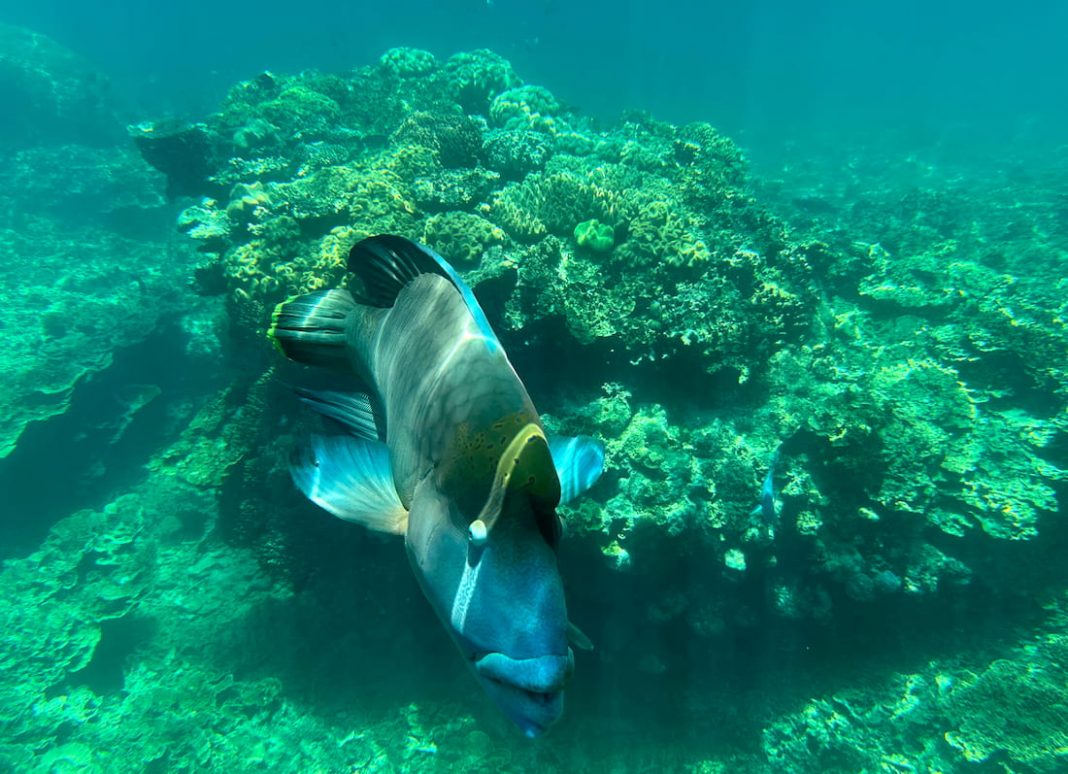The Great Barrier Reef appears to have suffered little damage from Tropical Cyclone Jasper around some of its most visited areas, according to expert tour guides and marine biologists.
Nearly three weeks after the cyclone made landfall in far north Queensland, Great Barrier Reef Biology general manager Eric Fisher is able to point to single pieces of coral that were detached and toppled.
“We have seen about 30 per cent of the coral impacted by Jasper and by that I mean the impact could be quite minor such as a piece or branch broken off,” Mr Fisher said.
This sparse damage was not obvious to the more than 200 tourists who took the Reef Magic boat tour to the area known as Moore Reef about 55 kilometres east off the coast from Cairns.
While the visitors snorkel, scuba dive and take semi-submersible tours from Reef Magic’s multi-storey pontoon, Mr Fisher crosses a line of buoys to an area that is still recovering from the much more powerful Cyclone Yasi in 2011.
Those damaged areas consist of patches with nothing but loose and colourless fragments of coral, which he refers to as ‘rubble’, or a single species of fast-growing brown leafy coral.
“Those areas have a low rate of recovery as the rubble chunks are loose and moving around and not creating a good habitat for baby coral to grow,” Mr Fisher said.
Great Barrier Reef Biology, a reef guide and research group owned by a tourism operator, has been working over the past few years to place a network of hexagonal frames over the damaged areas.
The metal ‘stars’ are coated with crushed limestone coral to take hold and grow on a steady platform.
Mr Fischer said the result after two or three years was much closer to the traditional image of the reef with multiple coral and fish species living together,
“Sustainable tourism is very important, we’re out here every day looking after the reef … it’s also showing our knowledge of the reef to the world and building a connection to it,” Mr Fisher said.
The UNESCO World Heritage site, stretching for 2300 kilometres, still faces long-term threats from climate change and more immediate impacts from extreme weather.
Dr Katharina Fabricius, senior principal research scientist at the Australian Institute of Marine Science in Townsville, says Jasper could continue to damage the reef with run-off from floods disturbing the balance of microscopic ocean life.
She is studying the factors that can limit the natural recovery of the reef.
“In some places recovery is slow because there have been so many disturbances from climate change and in some areas it may become necessary to intervene with reef restoration,” Dr. Fabricius said.
According to Australian Marine Conservation Society campaign manager and marine scientist Dr Lissa Schindler, restoration alone will not be able to overcome the impacts of warmer oceans and more frequent extreme weather events.
“At the end of the day, (reef restoration) efforts will be for naught if climate change isn’t addressed,” she said.
This AAP article was made possible with the support of Tourism and Events Queensland.



